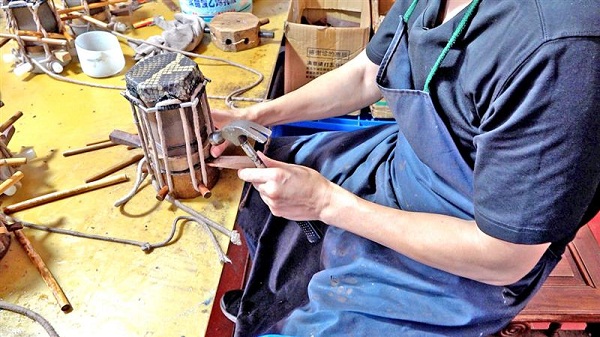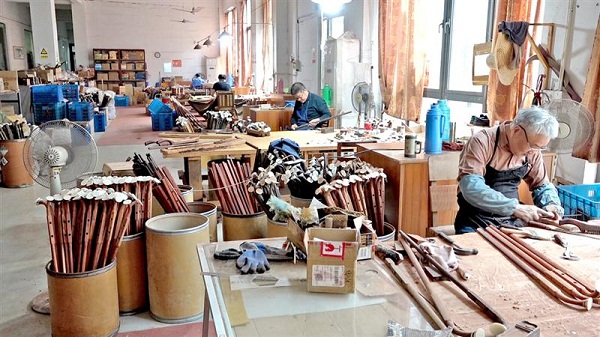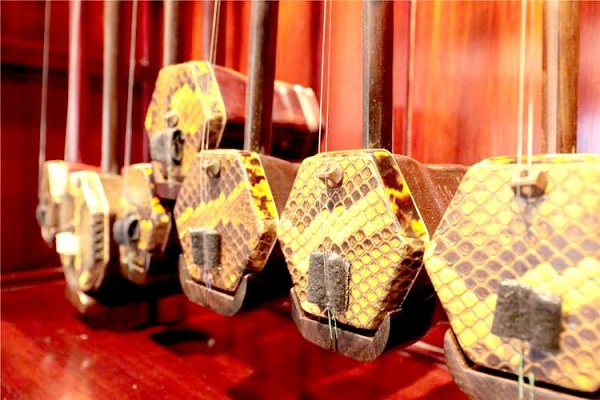
A handicraftsman makes erhu at Guyue, an erhu workshop in Meicun town. [Photo/wxrb]
Unlike many intangible cultural heritage items in China, the crafting technique of the traditional Chinese instrument erhu in Meicun town, Wuxi, East China's Jiangsu province, has been prospering.
Meicun town started marking the erhu in 1965 when the Meicun Traditional Musical Instrument Factory was built. Today, the town is home to 20 erhu workshops.

Handicraftsmen work at Guyue. [Photo/wxrb]
Guyue is one of the outstanding workshops in Meicun. Its owner Bu Guangjun inherited it from his father-in-law and plans to pass it down to his son-in-law.
According to Bu, May and October is the best time to make erhu as the tune of the musical instrument is affected by temperature and humidity.
Although the erhu, which comprises a sound box, neck, peg, strings, nut and bridge, looks simple, the crafting process involves more than 200 procedures, with the selection of raw materials being the most crucial step.

Erhu made by Guyue. [Photo/wxrb]
Bu said that erhu made out of the rosewood in the Ming and Qing dynasties (1368-1911) can produce better resonant sound and its tune is also influenced by the the sound box's material.
Erhu makers would adjust the materials for the sound box, including its thickness and tightness, according to the music played by the musicians and their playing habits, added Bu.
Guyue makes more than 5,000 erhu every year, some of which are exported to Singapore, Japan, and other countries.